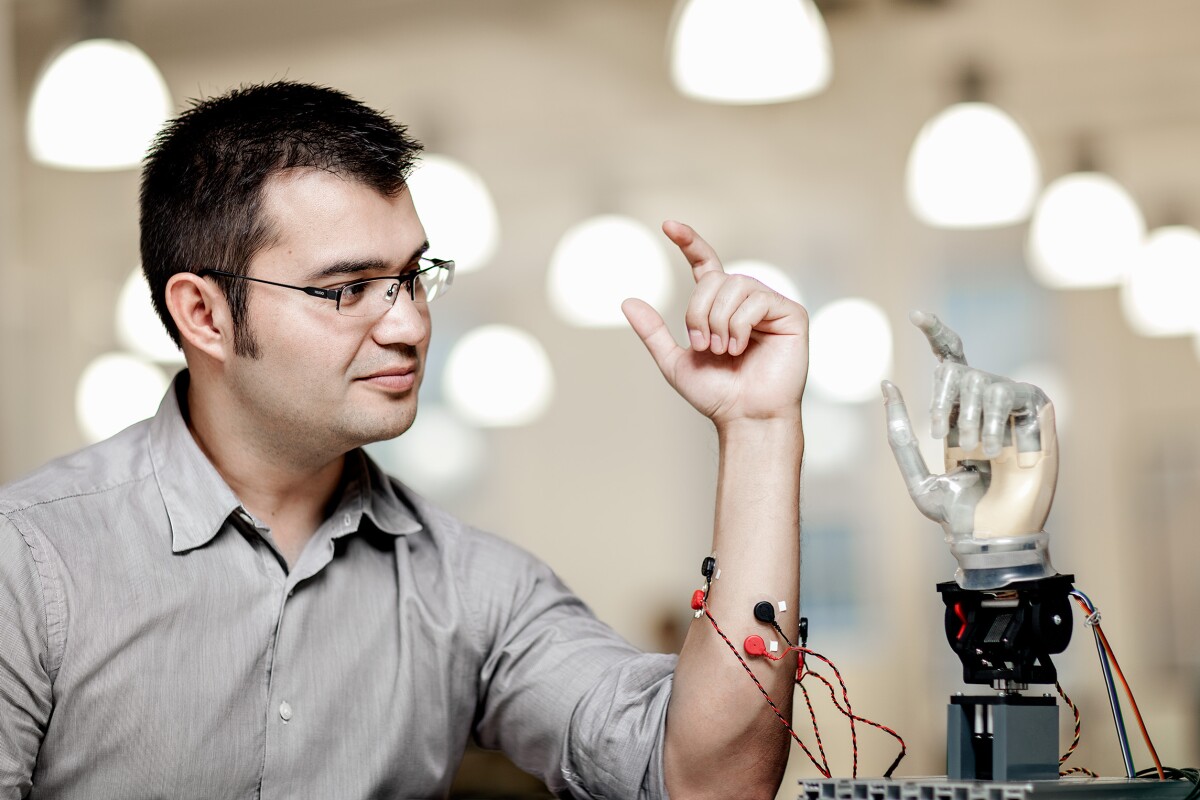Researchers based at Chalmers University of Technology in Sweden have developed the world’s first thought-controlled, fully implantable robotic arm, which uses an amputee's own nerves and remaining muscles to afford a much more intuitive level of control than previously possible. Initial operations on patients are scheduled to take place during the Northern Hemisphere’s upcoming winter.
Prosthetic limbs which are controlled by electrical impulses in the muscles have been available to amputees since the 1960’s, but they tend to be limited in function and difficult to control. Additionally, many amputees find the standard method of using a tightly fitted socket to attach the prosthetic limb to the body so uncomfortable, that they choose to simply forgo using one altogether.
Keen to maximize the comfort and intuitiveness of their design, the Chalmers researchers looked to a process known as osseointegration. Originally developed in the 1960‘s, osseointegration involves joining living bone to the surface of an artificial implant, and has been used successfully for ear, eye, and nose prosthetics, in addition to larger limb prosthetics.
“Osseointegration is vital to our success,” explained Max Ortiz Catalan, industrial doctoral student at Chalmers University of Technology in Sweden. “We are now using the technology to gain permanent access to the electrodes that we will attach directly to nerves and muscles.”

A titanium implant will be anchored directly to the patient’s skeleton, and feature electrodes which join onto the remaining nerves and muscles of the amputee. Employing the electrodes in this way affords a significantly increased signal stability when compared to the typical method of controlling prostheses, which involves placing electrodes on the skin’s surface.
Electrical impulses are to be captured from the subject’s nerves with the implanted electrodes, before being transferred to a neural interface, which in turn transmits these impulses through the osseointegrated titanium implant. Finally, the impulses are decoded by sophisticated algorithms within the artificial arm, which help give the subject fine control over movements.
The artificial hand itself is very dexterous. Motors in each finger can be controlled both individually and simultaneously, allowing greater freedom of movement than was possible until now. The artificial hand also gives a level of feedback as the electrodes stimulate the neural pathways to the patient’s brain – presumably in way similar to real limbs. This contrasts with the more typical and inexact method of relying on auditory or visual feedback from an artificial hand’s motors to estimate the grip force.
The first operations on human patients will take place during the Northern Hemisphere’s upcoming winter, and Catalan and his colleagues hope that, following a successful demonstration, their technology will eventually be used more widely.
The video below (which uses the less exact skin-based electrodes for the sake of demonstration), looks very promising, and should the human trials prove successful, the new prosthesis system could potentially change the lives of many amputees.





